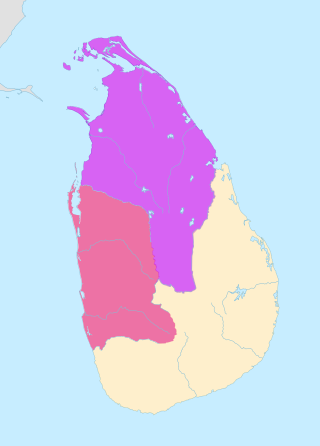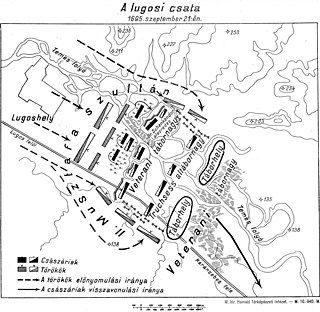Related Research Articles

The 12th century is the period from 1101 to 1200 in accordance with the Julian calendar. In the history of European culture, this period is considered part of the High Middle Ages and overlaps with what is often called the "'Golden Age' of the Cistercians". The Golden Age of Islam experienced significant development, particularly in Islamic Spain.

Jatavarman Sundara I, also known as Sadayavarman Sundara Pandyan, was an emperor of the Pandyan dynasty who ruled regions of Tamilakam, Northern Sri Lanka, and Southern Andhra between 1250–1268 CE. He is remembered for his patronage of the arts and Dravidian architecture, along with refurbishment and decoration of many Kovils (temple) in the Tamil continent. He oversaw a massive economic growth of the Pandyan empire. On the eve of his death in 1268 CE, the second Pandyan empire's power and territorial extent had risen to its zenith till Nellore and Kadapa by defeating Telugu Chola rulers Vijaya Gandagopala, Manumasiddhi III of Nellore Cholas and Ganapatideva of Kakatiyas.

The Battle of Monastir took place near the town of Bitola, Macedonia during the First Balkan War, between Serbian and Ottoman forces from 16 to 19 November 1912. It resulted in a Serbian victory after heavy fighting north of the city, the routed Turks fled abandoning their guns.

Chandrabhanu or Chandrabhanu Sridhamaraja was the King of Tambralinga Kingdom in present-day Thailand, Malaysia and Sumatra and the Jaffna Kingdom in northern Sri Lanka. A Javaka, he was known to have ruled from during the period of 1230 until 1262. He was also known for building a well-known Buddhist stupa in southern Thailand. He spent more than 30 years in his attempt to conquer Sri Lanka. He was eventually defeated by the forces of the Pandyan Dynasty from Tamil Nadu in 1262 and was killed by the brother of the south Indian Emperor Jatavarman Sundara Pandyan.

The Early Pandyas of the Sangam period were one of the three main kingdoms of the Tamilakam, the other two being the Cholas, and Cheras dynasty. As with many other kingdoms around this period, most of the information about the Early Pandyas come to modern historians mainly through literary sources and some epigraphic, archaeological and numismatic evidence. The capital of the Early Pandyan kingdom was initially Korkai, Thoothukudi and was later moved to Koodal during the reign of Nedunjeliyan I.

The Kingdom of Polonnaruwa was the Sinhalese kingdom that expanded across the island of Sri Lanka and several overseas territories, from 1070 until 1232. The kingdom started expanding its overseas authority during the reign of Parakramabahu the Great.
Dhatusena was a king of Sri Lanka who reigned from 455 to 473 AD. He was the first king of the Moriyan dynasty. In some records, he is also identified as Dasenkeli. Dhatusena reunited the country under his rule after twenty six years of anarchy, defeating the six Dravidians that were ruling the country at that time. Dhatusena built large reservoirs and canals to augment the agriculture in the country.
Lankapura Dandanatha, more commonly referred to as simply Lankapura, was a Senapati of the Sinhala Army during the reign of King Parakramabahu I. He led an expeditionary force to South India in support of the Pandyan king Parakrama Pandyan I, bringing parts of Pandya Nadu under their control. Lankapura succeeded in restoring the Pandyan prince to the throne, and ordered the use of Sri Lankan currency in areas under his and Pandyan prince control.
The Battle of Castelnaudary occurred at Castelnaudary, France, on 1 September 1632, between the rebel forces of Henri II de Montmorency and the royalist forces of Marshal Henri de Schomberg.
Nandivarman III was an Indian monarch of the Nandivarman II line who ruled the Pallava kingdom from 846 to 869. He was the son of Dantivarman and the grandson of Nandivarman II.

The Battle of Lugos was fought on 21 September 1695 near the city of Lugos in the East Banat, between the forces of the Ottoman Empire and the forces of the Habsburg monarchy as part of the Great Turkish War.
Savakanmaindan was a monarch of the kingdoms of Tambralinga and Jaffna. He was the son of the Savakan king Chandrabhanu of Tambralinga of the Padmavamsa, Captured northern Sri Lankan in 1255 AD. During his rule of Jaffna, the Venetian traveller Marco Polo visited northeastern Sri Lanka.

The Pandyan Civil War from 1169 to 1177 was precipitated by rival claims of succession to the Pandyan throne. The Civil War began between Parakrama Pandyan and his nephew Kulasekhara Pandyan and lasted for the next 15 years between successive Pandyan kings. The war gradually spread to the rest of Southern India when the Chola King Rajadhiraja II and the Sinhalese King Parakramabahu I of Polonnaruwa entered the fray and took opposing sides in the conflict, eager to increase their influence in the Pandya kingdom.

Rajarata was one of three historical regions of the island of Sri Lanka for about 1,700 years from the 6th century BCE to the early 13th century CE. Several ancient cities, including Tambapanni, Upatissa Nuwara, Anuradhapura and Polonnaruwa, were established as capitals within the area by successive rulers. Rajarata was under the direct administration of the King. Two other areas, Mayarata and Ruhunurata, were ruled by the king's brothers "Mapa" and "Epa". The Magha invasion in the 13th century brought about the end of the Rajarata kingdom.

Srimara Srivallabha (Tamil:சீமாறன் சீவல்லபன்) was a Pandya king of early medieval south India.
The Thiruvilaiyadal Puranam is a collection of sixty-four 7th-century Shaivite devotional epic stories by the sage Paranjothi. They describe the actions of Shiva on earth in a number of disguises to test and help his devotees.

The Battle of Varvarin was fought on 5 September 1810 between Serbian Revolutionary forces supported by Russian troops and Ottoman forces near Varvarin, at the time part of the Ottoman Empire,. During the 10-hour battle, the Turkish army unsuccessfully attacked the Russians and Serbs, but was never able to push them out of their positions, retreating in the evening with heavy casualties.
The siege of Madurai in 862 resulted in the seizure and sack of the city of Madurai, capital of the Pandya Empire then ruled by Srimara Sri Vallabha. This was a part of Sena II's retaliatory campaign against the devastation caused by Pandya incursions during his predecessor. According to Mahavamsa, the invasion ended in a decisive victory for the Anuradhapura king, with the death of Srivallabha and the coronation of prince Varaguna II by general Kuttaka. But the Pandya sources says that the Sena II's invasion was successfully repelled.
In 1173, an invasion began against the dynasty of South India by the Sinhalese king Maha Parakramabahu and Vira Pandyan of Pandyan Dynasty. His armies and Vira pandya armies first captured the Pandyan kingdom, and then advanced into Chola Nadu, attacking the Tondi and Pasi regions of Present-day Ramanathapuram.

Malayan invasions of Sri Lanka occurred in the mid-13th century, when the Malayan ruler Chandrabhanu Sridhamaraja of Tambralinga, invaded Sri Lanka twice during the reign of king Parakramabahu II of Dambadeniya. Both invasions were successfully repulsed by the Kingdom of Dambadeniya.
References
- Jaques, Tony (2007). Dictionary of Battles and Sieges. Greenwood Publishing Group. ISBN 978-0-313-33539-6.
